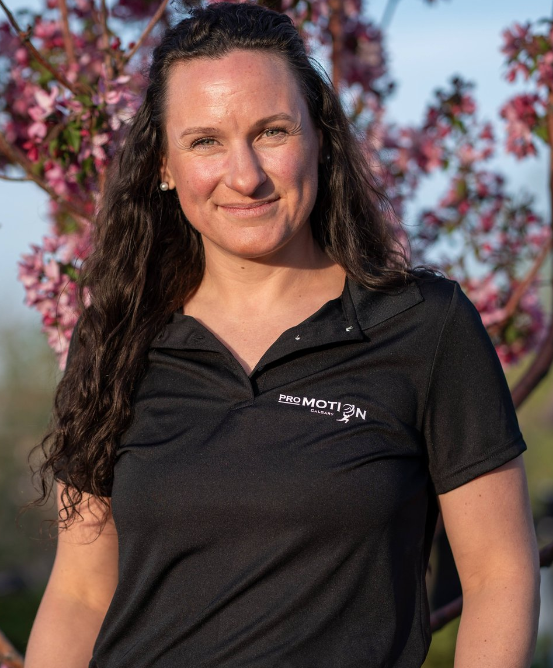Registered Massage Therapy
“The body remembers everything. Massage helps you remember relaxation.”
What makes our Registered Massage Therapists different?
Their philosophy at our clinic is based on the theory that pain is a symptom of something else going on in the body. This is usually coming from a movement pattern dysfunction that your body has created to compensate for weakness or pain. Typically these patterns arise from an injury, trauma, repetitive movement or sustained posture.
What is the initial process like?
Our practitioners know- a body doesn’t like weakness, so it pulls strength from anywhere it can to create stability. If the body does this for long enough, it can cause tissue damage leading to pain. This is effective, but not efficient, as it only leaves the body susceptible to future injury. The key to solving for pain is assessment.
Our therapist's treatments are assessment-focused, initially they will be running you through functional movement screens, orthopaedic and muscle testing. Their goal is to correct any dysfunction with treatment and corrective exercises to get you back to peak health. We are passionate about creating change through effective treatments so you feel lasting results.
How do you know it will help?
Our therapists will always do what is best for you and your body. Their extensive training and knowledge provides a systematic trust with all our patients. You are in amazing hands here.
“Massage is not just a luxury, it is the way to a happier life.”
We also offer direct billing for massage therapy services to allow you to focus on healing while we handle the billing!
Our Team:
Jennifer Garvin
Jennifer is open, passionate, curious, and truly continues to have the heart of a student. She has traversed the globe, immersing herself in different cultures, languages, customs, and techniques. She prides herself on staying on top of current research and techniques and strives to think “outside the box” to create a unique treatment plan for each of her patients. Her pursuit is to find balance, mind, body, and spirit, utilizing an array of techniques tailored to each individual's therapeutic needs.
Lauren Dickey
Lauren believes massage is for everyBODY, from high performance athletes, fitness nuts, desk jockeys, sedentary folks and everything in between! Lauren believes massage helps to promote increased mobility and restore function. Lauren has a superior treatment style for those interested in taking an active role in their wellness journey.
Lauren is a therapeutic, active style massage therapist. She tries to incorporate stretches and active tissue release in her treatments as much as your body and comfort allows. Lauren love helping her clients figure out why their soft tissue issues are happening and how she can help them work with their bodies to rehab or prevent limitations. Lauren believe everyBODY benefits from regular massage since our muscles are being used every day; whether you move or not!
Jonathan Fuller
Jonathan is a Registered Massage Therapist that graduated from Makami College in 2021. He is registered through CRMTA, graduated with 3000 hours, and plans to continue education into Reflexology. Jonathan has worked in both spa and therapeutic environments. He believes that the power of touch is a powerful thing. He is passionate about working on shoulders and back pain issues.
Take a look at what some of our Massage Therapy patients have to say!
-
Here are the most common types of massage therapy, each with its own purpose and technique:
💆♂️ 1. Swedish Massage
Purpose: Relaxation and stress relief
Technique: Long, flowing strokes, kneading, and circular movements
Ideal for: First-time massage clients, general tension
💪 2. Deep Tissue Massage
Purpose: Release chronic muscle tension and knots
Technique: Slow, deep pressure targeting deeper layers of muscles and connective tissue
Ideal for: Chronic pain, postural issues, injury recovery
🏋️ 3. Sports Massage
Purpose: Prevent and treat sports injuries, improve performance
Technique: Combination of stretching, deep tissue, and trigger point techniques
Ideal for: Athletes or active individuals with overuse injuries
🤰 4. Prenatal Massage
Purpose: Ease pregnancy-related discomfort
Technique: Gentle techniques adapted to each trimester
Ideal for: Pregnant individuals (usually after the first trimester)
🔁 5. Myofascial Release
Purpose: Reduce tension in the fascia (connective tissue)
Technique: Gentle sustained pressure to release restrictions
Ideal for: Chronic pain, mobility issues, fibromyalgia
🎯 6. Trigger Point Therapy
Purpose: Relieve tight muscle “knots” causing referred pain
Technique: Focused pressure on specific tender points
Ideal for: Headaches, shoulder pain, sciatica, repetitive strain injuries
🌿 7. Relaxation Massage
Purpose: Stress relief and improved circulation
Technique: Light to medium pressure with soothing, rhythmic movements
Ideal for: Mental wellness, light tension, relaxation
Each type of massage can be customized to your needs, and Registered Massage Therapists (RMTs) often combine techniques during a session.
-
During a massage, you can undress to your comfort level—that’s the golden rule. Here’s how it works:
🔹 What Most People Do
Most clients undress fully or leave on underwear.
You are always covered with a sheet or towel, and only the area being worked on is exposed.
Your privacy is fully respected during undressing, positioning, and throughout the massage.
🧘 If You Prefer to Stay Dressed
That’s completely okay! Some massage types (like chair massage or Thai massage) are done fully clothed.
Let your therapist know your comfort level—they’ll adapt the session.
👚 Tips:
Wear comfortable clothing to your appointment.
Remove jewelry and tie up long hair if possible.
Speak up if anything feels uncomfortable—massage is about your comfort and care.
Whether you’re in gym shorts or fully undressed under the sheet, your Registered Massage Therapist (RMT) is trained to keep the experience professional, respectful, and relaxing.
-
Yes, you can absolutely see a massage therapist while pregnant, and in fact, prenatal massage is a safe and beneficial therapy for many expecting individuals—especially when provided by a Registered Massage Therapist (RMT) trained in pregnancy care.
🤰 Benefits of Prenatal Massage
Eases lower back pain, hip discomfort, and swollen feet
Reduces muscle tension and stress
Improves circulation and sleep quality
Helps manage pregnancy-related headaches and joint pain
🛑 Safety Tips
Most RMTs recommend waiting until after the first trimester unless otherwise advised by your doctor
Always inform your massage therapist that you're pregnant
Choose a clinic with therapists experienced in prenatal massage and equipped with pregnancy support cushions or side-lying techniques
✅ Good to Know
Prenatal massage is typically gentle and customized to your stage of pregnancy
It’s a great way to relax and support your changing body throughout pregnancy
-
Yes, seeing a massage therapist after surgery can be highly beneficial—as long as it's approved by your doctor and timed appropriately for your recovery stage.
✅ Benefits of Post-Surgical Massage
Reduces swelling and inflammation
Improves circulation to promote healing
Minimizes scar tissue formation and adhesions
Helps relieve muscle tension and compensation pain
Supports relaxation and reduces post-surgical anxiety or stress
⏱️ When to Start
Wait until cleared by your surgeon—this can range from a few days to several weeks post-op, depending on the procedure.
Massage may begin with gentle lymphatic drainage and progress to deeper techniques as you heal.
🛑 Caution
Avoid massage directly over incisions, stitches, or fresh scars until fully healed.
Communicate any numbness, tingling, or pain to your therapist.
Work with a Registered Massage Therapist (RMT) experienced in post-operative care.
Post-surgical massage should always be part of a coordinated care plan with your healthcare team. It’s especially helpful when paired with physiotherapy for complete recovery.










